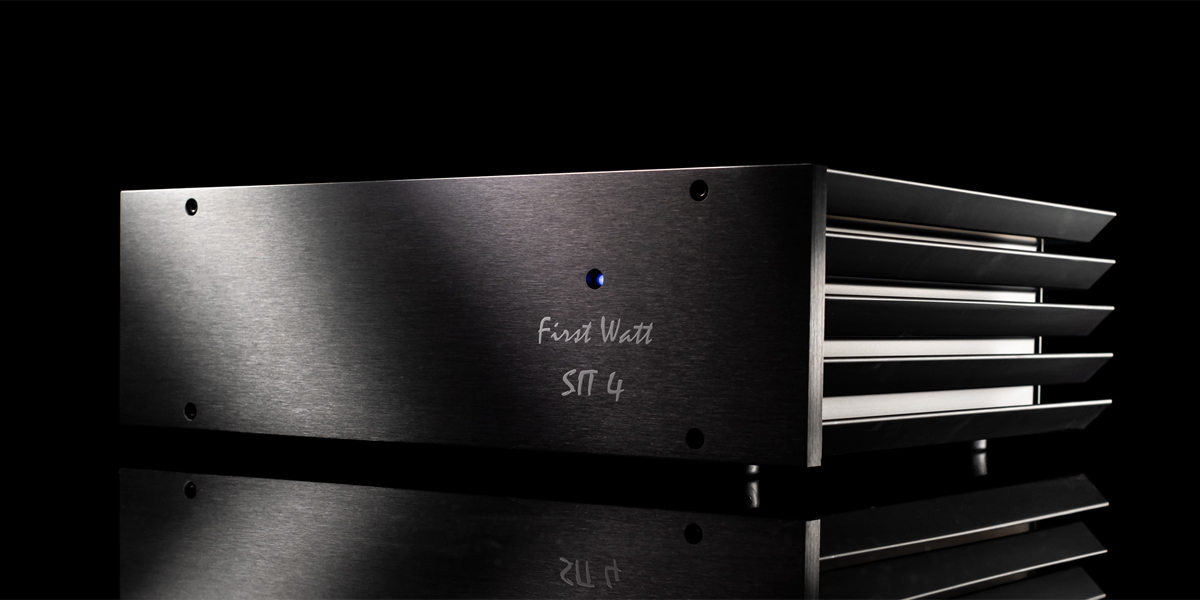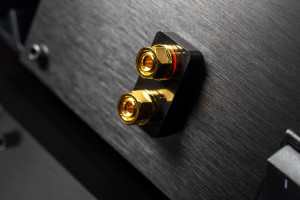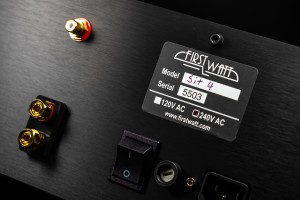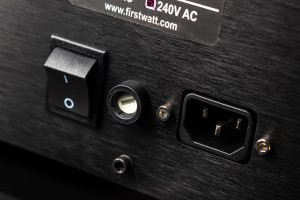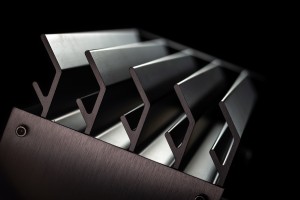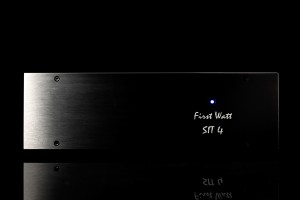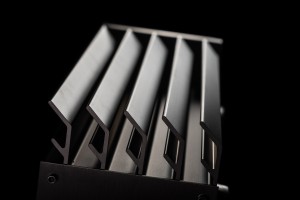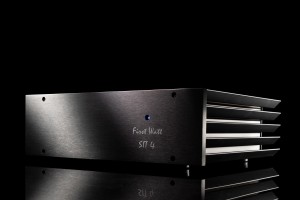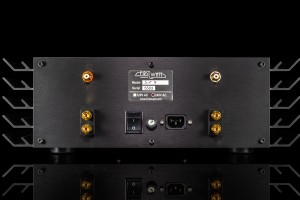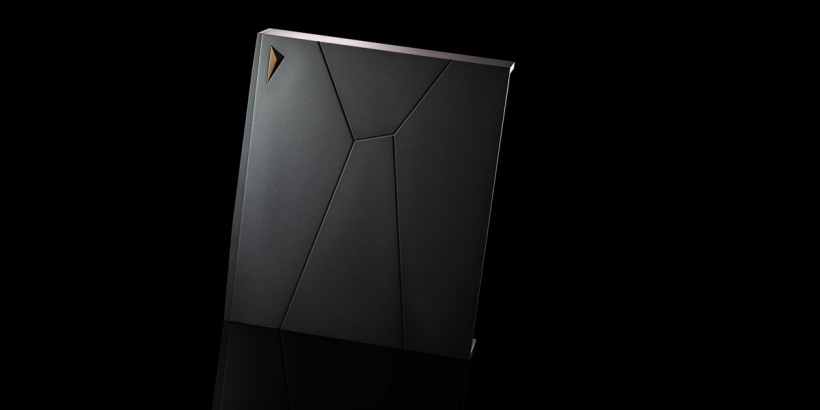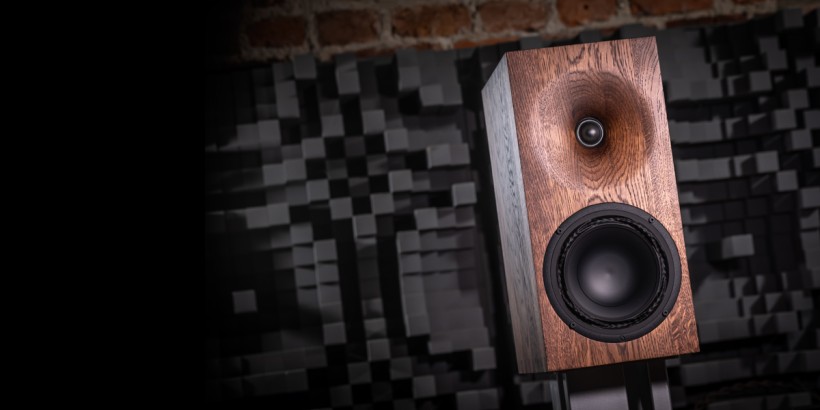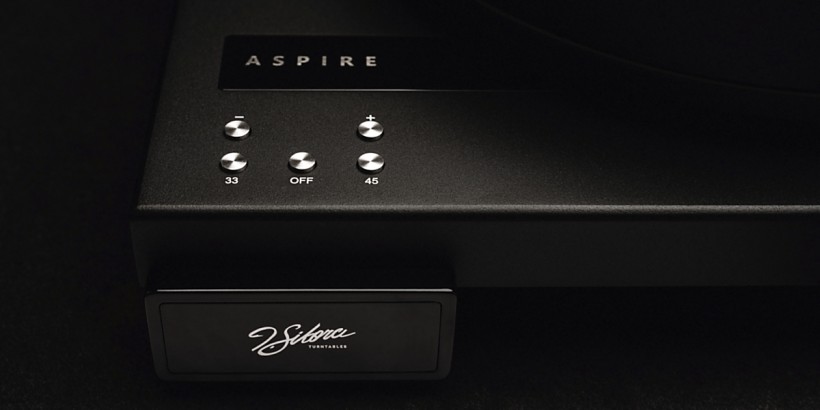FirstWatt SIT4 is the latest stereo power amp in the lineup. It’s also a 5wpc class A type infused with particular components which make a promise of DHT sonics from a solid-state device. Enjoy!
The SITh
If you’re familiar with the company Pass Labs and its founder Nelson Pass, his subsidiary enterprise FirstWatt may ring a bell, too. The former roster primarily comprises large costly preamps, phono stages and class A/AB amps fit to get along with most speakers out there on the market. The latter rather unusual outfit is Nelson’s kitchen table. Therein he experiments with specialist often unobtainable parts, which eventually make their way into elegantly minimalist clever amplifier circuits tailored for niche loads. Every now and then these efforts result in a new FirstWatt model ready for public consumption, and available for as long as component supplies allow. It’s been nearly four years since the last such arrival, which I’ve reviewed here. It feels like yesterday for two reasons. One, time goes by fast. Two, FirstWatt amps are memorable.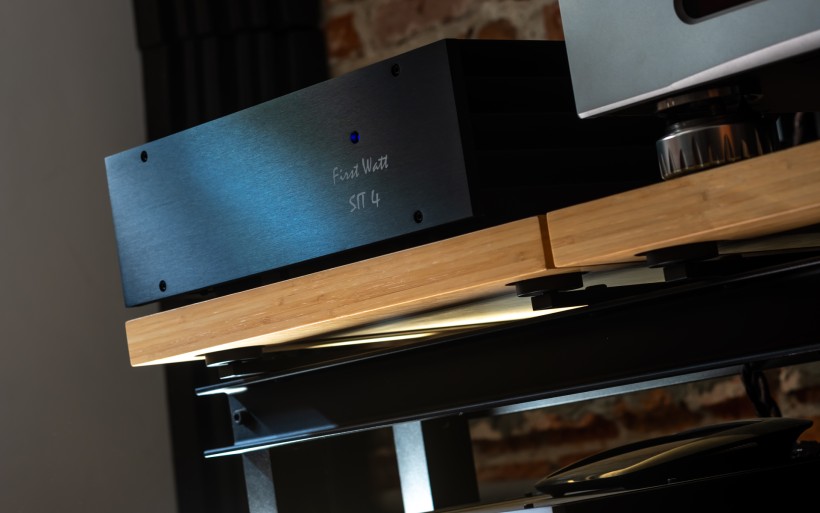 If the above sounds a fair bit non-mainstream, well, in a way it is. FirstWatt hardware is all about a handful of quality watts, usually 25wpc into 8Ω and oftentimes less, so puny power by today’s standards. As such it primarily caters to enthusiasts who rock high-efficiency speakers and are familiar with the brand. This particular audience already understands what they’re looking at upon opening the Firstwatt site. They also know that amps listed there are made by one of, if not the most accomplished transistor sifu on the planet. This Chinese word stands for master and teacher. Nelson truly is both. Known as Papa among the DIY audio community, he regularly contributes with info about his circuits, albeit in fashion which navigates forum sleuths towards his secret sauce without giving the full ingredient list right away, so like a proper tutor indeed.
If the above sounds a fair bit non-mainstream, well, in a way it is. FirstWatt hardware is all about a handful of quality watts, usually 25wpc into 8Ω and oftentimes less, so puny power by today’s standards. As such it primarily caters to enthusiasts who rock high-efficiency speakers and are familiar with the brand. This particular audience already understands what they’re looking at upon opening the Firstwatt site. They also know that amps listed there are made by one of, if not the most accomplished transistor sifu on the planet. This Chinese word stands for master and teacher. Nelson truly is both. Known as Papa among the DIY audio community, he regularly contributes with info about his circuits, albeit in fashion which navigates forum sleuths towards his secret sauce without giving the full ingredient list right away, so like a proper tutor indeed.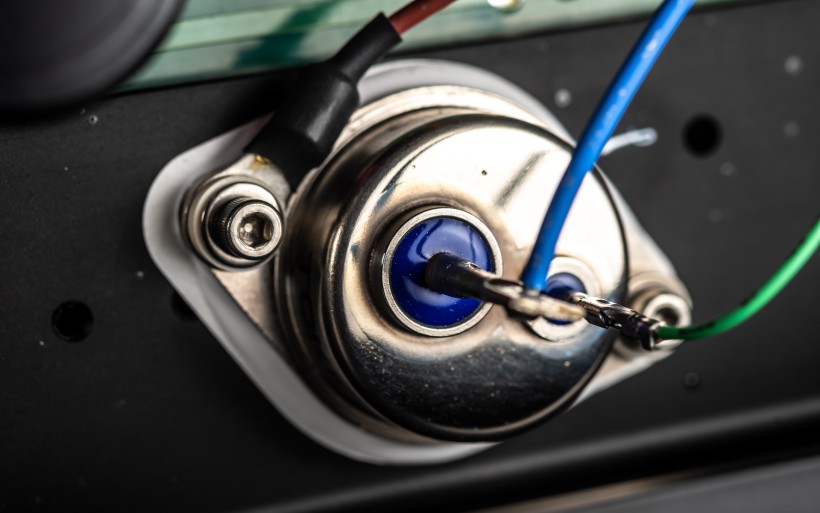 Sound made by our audio systems is the result of their inhabitants combined. Cables, power lines, transports, sources, amps, speakers etc. all imprint their individual sonic footprints on the outcome. Their mix ‘n’ matching to our liking is the very fuel of this hobby, but dos and don’ts still apply. For the sake of this article let’s narrow our scope to the two relevant examples. Large inefficient floorstanders connected to a purist 300B SET amp will make music, sure. However, the former’s low sensitivity and the latter’s alike power output aren’t fond of one another. Ditto their respective damping needs and output impedance. Conversely, sensitive full-range speakers and powerful class AB/D amps won’t make a marriage that’s meant to last either. One’s high efficiency won’t talk with the other’s low-Ω outputs. Mechanical compliance is a matter that goes beyond money. We can’t enforce it no matter how much we spend. That said, FirstWatt amps are for those who’re already aware of this, which in fact is the prerequisite to taking the full advantage of what these machines were designed to do and how. Today’s subject isn’t any different. It also is even more specialized than the other two FirstWatt platforms I had the pleasure of sampling.
Sound made by our audio systems is the result of their inhabitants combined. Cables, power lines, transports, sources, amps, speakers etc. all imprint their individual sonic footprints on the outcome. Their mix ‘n’ matching to our liking is the very fuel of this hobby, but dos and don’ts still apply. For the sake of this article let’s narrow our scope to the two relevant examples. Large inefficient floorstanders connected to a purist 300B SET amp will make music, sure. However, the former’s low sensitivity and the latter’s alike power output aren’t fond of one another. Ditto their respective damping needs and output impedance. Conversely, sensitive full-range speakers and powerful class AB/D amps won’t make a marriage that’s meant to last either. One’s high efficiency won’t talk with the other’s low-Ω outputs. Mechanical compliance is a matter that goes beyond money. We can’t enforce it no matter how much we spend. That said, FirstWatt amps are for those who’re already aware of this, which in fact is the prerequisite to taking the full advantage of what these machines were designed to do and how. Today’s subject isn’t any different. It also is even more specialized than the other two FirstWatt platforms I had the pleasure of sampling.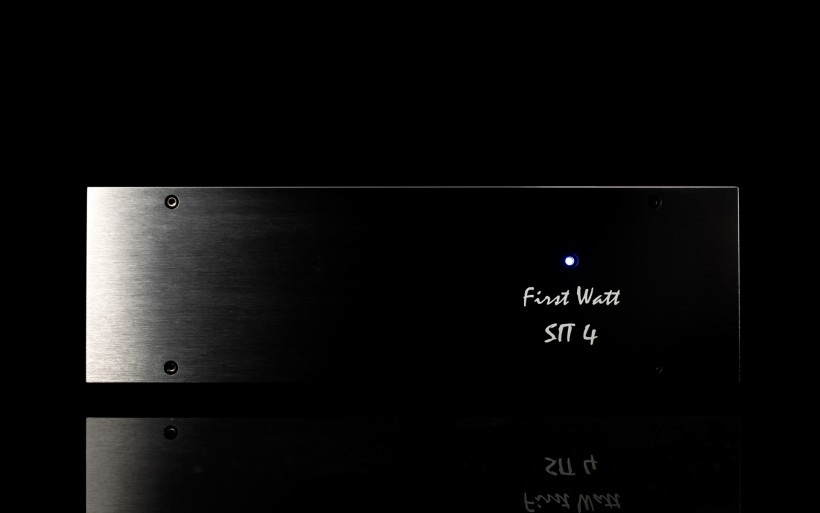 The FirstWatt F7 reviewed here in early 2016 was Nelson’s first product authored I got my hands and ears on. Rated at ‘only’ 25/50wpc into 8/4Ω and with variable 0.08 base output Ω, it behaved like a far more muscular amp yet packed far fewer components inside. This was also his first circuit with negative and positive feedback loops. Their respectively modest/low (14/2dB) application secured high damping without applying a ton of negative feedback alone to achieve the same effect and audibly suboptimal sonics. I still have that F7 loaner and use it every now and then with Thöress DFP pre. It aged very well and I still thoroughly enjoy it. The FirstWatt F8 sent my way in 2020 was a different animal that replaced the similar J2 model when Nelson ran out of the key components to make it. The former current-feedback (CFA) design had purer 2nd-order harmonics, lesser distortion, lower negative feedback, twice as low output impedance and higher HF bandwidth. It also sported a single front-end transistor instead of its predecessor’s six. Although the F8 is now discontinued, I remember well how it fared against the F7 and we’ll get to that in a bit.
The FirstWatt F7 reviewed here in early 2016 was Nelson’s first product authored I got my hands and ears on. Rated at ‘only’ 25/50wpc into 8/4Ω and with variable 0.08 base output Ω, it behaved like a far more muscular amp yet packed far fewer components inside. This was also his first circuit with negative and positive feedback loops. Their respectively modest/low (14/2dB) application secured high damping without applying a ton of negative feedback alone to achieve the same effect and audibly suboptimal sonics. I still have that F7 loaner and use it every now and then with Thöress DFP pre. It aged very well and I still thoroughly enjoy it. The FirstWatt F8 sent my way in 2020 was a different animal that replaced the similar J2 model when Nelson ran out of the key components to make it. The former current-feedback (CFA) design had purer 2nd-order harmonics, lesser distortion, lower negative feedback, twice as low output impedance and higher HF bandwidth. It also sported a single front-end transistor instead of its predecessor’s six. Although the F8 is now discontinued, I remember well how it fared against the F7 and we’ll get to that in a bit.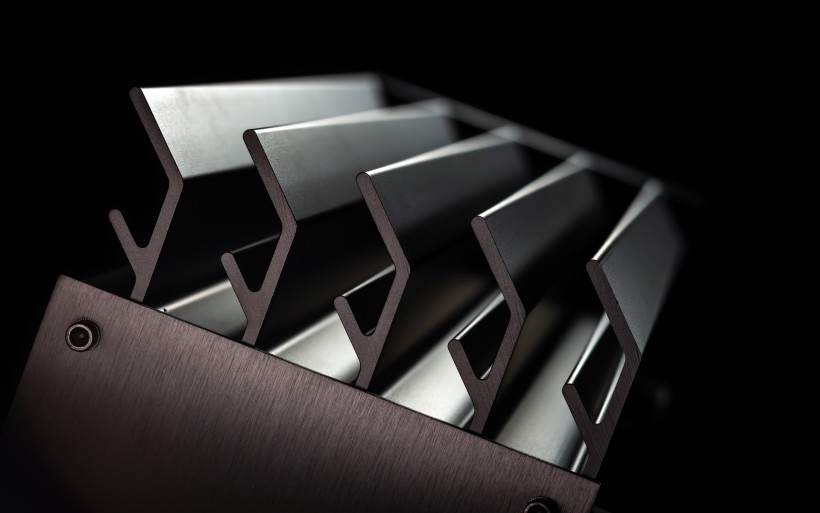 The entire FirstWatt SIT family is the already non-mainstream brand’s special division. Each its design incorporates rare static-Induction transistors aka SITs (a type of a Jfet) in the output stage. These components invented in Japan in the ‘50s were used two decades later in Sony and Yamaha VFET power amps, which have their fans even today. Then came the era of the more cost-efficient bipolar transistors. SITs were dethroned in audio applications, but the use for them in other areas remained. Most Jfets and Mosfets emulate pentode behavior. SIT devices emulate triode characteristics, want just few parts to get going and have soft overload characteristics, so Nelson found them the ideal candidates for his minimalist class A circuits. These fine transistors also provide enough voltage and current to speakers without inherently lossy output transformers, which in typical directly-heated non-OTL tube amp convert high-voltage/low-current triode output to low-voltage/high-current signal useful for speakers. Exotic DHTs look dope and rolling them is a ton of fun. Their life expectancy and cost isn’t. As the latest SIT on the block, today’s FirstWatt is a solid-state affair that promises us triode-like sonics minus all the usual hassle and downsides. Tube aficionados happy with its cost-effective visually plain aluminium box instead of the usual shiny kit with protruding glass may find that a win-win scenario. Many FirstWatt shoppers actually do.
The entire FirstWatt SIT family is the already non-mainstream brand’s special division. Each its design incorporates rare static-Induction transistors aka SITs (a type of a Jfet) in the output stage. These components invented in Japan in the ‘50s were used two decades later in Sony and Yamaha VFET power amps, which have their fans even today. Then came the era of the more cost-efficient bipolar transistors. SITs were dethroned in audio applications, but the use for them in other areas remained. Most Jfets and Mosfets emulate pentode behavior. SIT devices emulate triode characteristics, want just few parts to get going and have soft overload characteristics, so Nelson found them the ideal candidates for his minimalist class A circuits. These fine transistors also provide enough voltage and current to speakers without inherently lossy output transformers, which in typical directly-heated non-OTL tube amp convert high-voltage/low-current triode output to low-voltage/high-current signal useful for speakers. Exotic DHTs look dope and rolling them is a ton of fun. Their life expectancy and cost isn’t. As the latest SIT on the block, today’s FirstWatt is a solid-state affair that promises us triode-like sonics minus all the usual hassle and downsides. Tube aficionados happy with its cost-effective visually plain aluminium box instead of the usual shiny kit with protruding glass may find that a win-win scenario. Many FirstWatt shoppers actually do. The first SIT amp released in 2011 was a zero-feedback 10wpc mono design that featured one common-source SemiSouth Jfet per channel. The successor named SIT2 remained within the same topology yet was a more efficient stereo type. The SIT3 offered significantly higher power output (18/30wpc into 8/4Ω) and had its SIT transistors set in the common-drain mode biased by Nelson’s novel MUFF (Mu Follower/Follower) circuit. The existing stock of these key parts eventually ran out and the SemiSouth company itself was no more, which necessitated the hunt for a fitting replacement. Nelson tracked industry-grade SITs by the Japanese manufacturer Tokin, whose plant was unfortunately destroyed during the Fukushima earthquake in 2011. The process of securing enough existing Tokin SITs from various suppliers took several years. The SIT4 project was built around these unique parts, which take the form of a massive Tokin THF51 Jfet rated at 600V/30A/400W and 50MHz bandwidth. One per channel, driven by a NOS Toshiba 2SK170 and biased by a mu-follower current source. This specialist transistor stock is strictly limited, so once it’s gone, it’s gone.
The first SIT amp released in 2011 was a zero-feedback 10wpc mono design that featured one common-source SemiSouth Jfet per channel. The successor named SIT2 remained within the same topology yet was a more efficient stereo type. The SIT3 offered significantly higher power output (18/30wpc into 8/4Ω) and had its SIT transistors set in the common-drain mode biased by Nelson’s novel MUFF (Mu Follower/Follower) circuit. The existing stock of these key parts eventually ran out and the SemiSouth company itself was no more, which necessitated the hunt for a fitting replacement. Nelson tracked industry-grade SITs by the Japanese manufacturer Tokin, whose plant was unfortunately destroyed during the Fukushima earthquake in 2011. The process of securing enough existing Tokin SITs from various suppliers took several years. The SIT4 project was built around these unique parts, which take the form of a massive Tokin THF51 Jfet rated at 600V/30A/400W and 50MHz bandwidth. One per channel, driven by a NOS Toshiba 2SK170 and biased by a mu-follower current source. This specialist transistor stock is strictly limited, so once it’s gone, it’s gone. The externally reinforced cardboard nested the SIT4 loaner inside a thick translucent bag and in-between foamy liners. A spare fuse, QC card and standard-issue power cord were all the sundry accessories. As far as specs go, today’s solid-state single-ended zero-feedback class A stereo amp does 10/5wpc into 8/4Ω (@2% THD, 1KHz). Input/output impedance is (!) 4Ω/100KΩ, gain is set at 20dB, frequency response is 4Hz – 80kHz (-3dB) and noise (unweighted, 20Hz – 20kHz) is 75uV. 200W power draw at idle and full load doesn’t shock given the SIT4’s exclusive class A bias. This FirstWatt measures standard (W x H x D) 43 x 14 x 38cm and weighs 14.5kg, so adults and rack shelfs will manage just fine.
The externally reinforced cardboard nested the SIT4 loaner inside a thick translucent bag and in-between foamy liners. A spare fuse, QC card and standard-issue power cord were all the sundry accessories. As far as specs go, today’s solid-state single-ended zero-feedback class A stereo amp does 10/5wpc into 8/4Ω (@2% THD, 1KHz). Input/output impedance is (!) 4Ω/100KΩ, gain is set at 20dB, frequency response is 4Hz – 80kHz (-3dB) and noise (unweighted, 20Hz – 20kHz) is 75uV. 200W power draw at idle and full load doesn’t shock given the SIT4’s exclusive class A bias. This FirstWatt measures standard (W x H x D) 43 x 14 x 38cm and weighs 14.5kg, so adults and rack shelfs will manage just fine.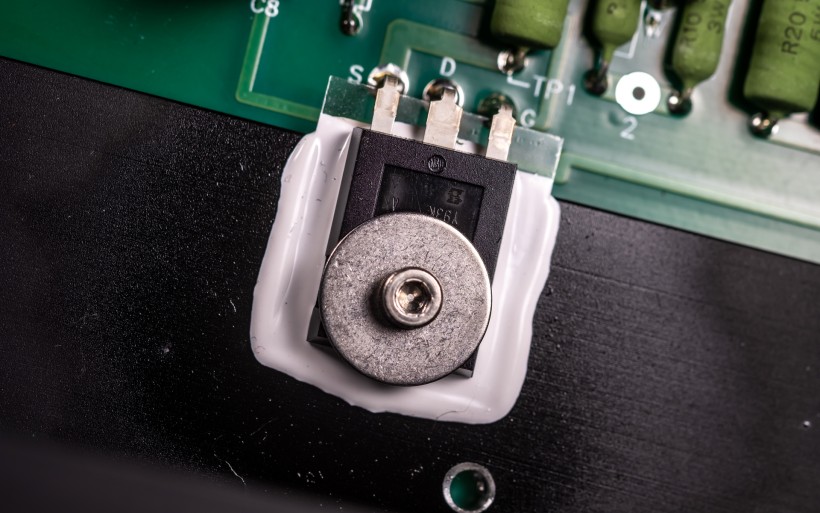 Casework eats up a lot of resources, so the entire FirstWatt roster shares the same exterior to offset that. This is also the limiting factor for SIT4’s Jfets, which on larger heatsinks probably could go above 10wpc. In reality that’s more than enough for clients any serious about such amps. Their speakers largely remain below 1 watt anyway. Moving on, today’s thick black brushed aluminium forehead held in place via four bolts features a single on/off LED and the model name just below. Clustered radiator fins on each cheek and heavily perforated top and underside are essential given how scorching hot the SIT4 gets. The rear packs the main on/off rocker, a fused IEC inlet, gold-plated RCA inputs and speaker posts plus a nameplate in between these, so nothing above the mandatory stuff. The view under the bonnet is very much FirstWatt-like, so clean and minimalist. A large toroidal transformer just next to the filtering/rectification board and two output stages on PCB rails make the entire circuit, whose general layout and many parts we’ve already seen in the previous FirstWatt projects. Large round Tokin THF51 SIT devices with their protruding gates are the critical novelty and visually quite the sight to look at. Now it’s time to investigate what sound the SIT4 makes with them as its very heart.
Casework eats up a lot of resources, so the entire FirstWatt roster shares the same exterior to offset that. This is also the limiting factor for SIT4’s Jfets, which on larger heatsinks probably could go above 10wpc. In reality that’s more than enough for clients any serious about such amps. Their speakers largely remain below 1 watt anyway. Moving on, today’s thick black brushed aluminium forehead held in place via four bolts features a single on/off LED and the model name just below. Clustered radiator fins on each cheek and heavily perforated top and underside are essential given how scorching hot the SIT4 gets. The rear packs the main on/off rocker, a fused IEC inlet, gold-plated RCA inputs and speaker posts plus a nameplate in between these, so nothing above the mandatory stuff. The view under the bonnet is very much FirstWatt-like, so clean and minimalist. A large toroidal transformer just next to the filtering/rectification board and two output stages on PCB rails make the entire circuit, whose general layout and many parts we’ve already seen in the previous FirstWatt projects. Large round Tokin THF51 SIT devices with their protruding gates are the critical novelty and visually quite the sight to look at. Now it’s time to investigate what sound the SIT4 makes with them as its very heart.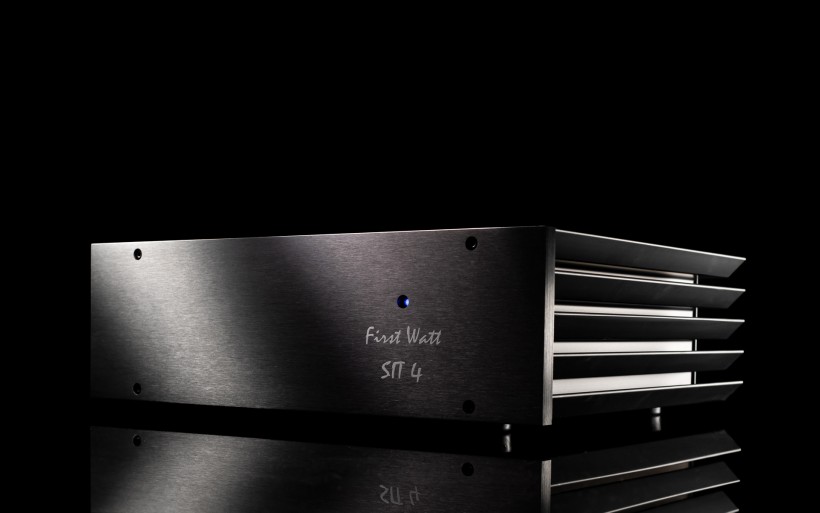 The SIT4’s very high 4Ω output impedance means pretty much non-existent control over a driver’s rear strokes. Most speakers don’t benefit from that. High-efficiency wideband drivers very much do, especially their crossoverless kind rear-loaded with a large folded horn that can go very deep. Cube Audio speakers seemed ideal for the task. Srajan’s take on the previous SIT version already tells that story in detail. In the event of poor sonics at my place I could always ask team Cube to send me one of their models, but this was my backup plan. I had two other full-range prospects at my disposal; sound|kaos Vox 3afw (4Ω/92dB) and ZU Audio DWX Supreme (12Ω/95dB). Although neither reaches as low as i.e. Cube Nenuphar, I can tell you as early as now that these loads more than sufficed for the SIT4 job.
The SIT4’s very high 4Ω output impedance means pretty much non-existent control over a driver’s rear strokes. Most speakers don’t benefit from that. High-efficiency wideband drivers very much do, especially their crossoverless kind rear-loaded with a large folded horn that can go very deep. Cube Audio speakers seemed ideal for the task. Srajan’s take on the previous SIT version already tells that story in detail. In the event of poor sonics at my place I could always ask team Cube to send me one of their models, but this was my backup plan. I had two other full-range prospects at my disposal; sound|kaos Vox 3afw (4Ω/92dB) and ZU Audio DWX Supreme (12Ω/95dB). Although neither reaches as low as i.e. Cube Nenuphar, I can tell you as early as now that these loads more than sufficed for the SIT4 job.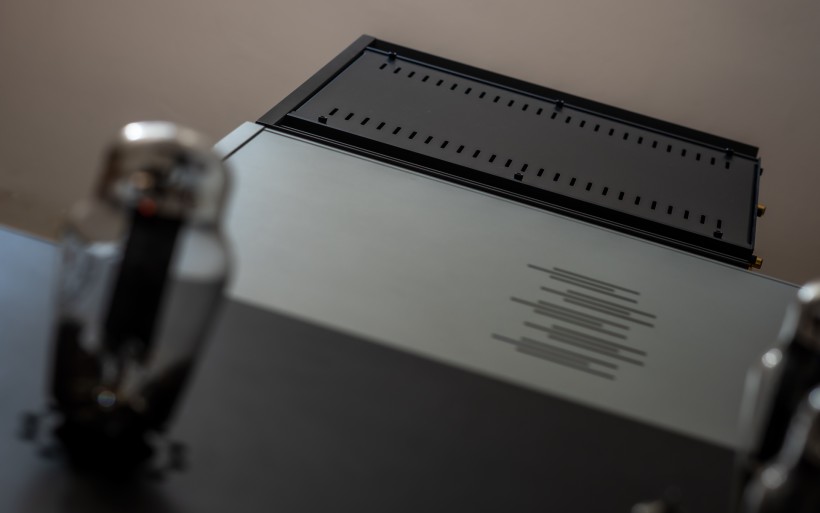 Prior to explaining how the SIT4 fared against the F7, let’s start with the latter. Many years ago this elegantly voiced product showed me that low-power amps groomed for richness, color, euphony and sensuality can also sound spacious, quick and detailed. A tailored load is all it takes to secure these often mutually exclusive traits. The F7’s tastefully executed profile avoids excess. It prioritizes tone, vividness, sensuality and all other means which make music pretty and enjoyable to listen to. It also says nay to grain, harshness and stuffiness. Deep class A bias implies that already. This FirstWatt also is ace on the spatial front. It renders sound field in a nicely moisturized, open, organic and breathing manner, which allows virtual sound sources to blossom naturally from within instead of overdoing their contours.
Prior to explaining how the SIT4 fared against the F7, let’s start with the latter. Many years ago this elegantly voiced product showed me that low-power amps groomed for richness, color, euphony and sensuality can also sound spacious, quick and detailed. A tailored load is all it takes to secure these often mutually exclusive traits. The F7’s tastefully executed profile avoids excess. It prioritizes tone, vividness, sensuality and all other means which make music pretty and enjoyable to listen to. It also says nay to grain, harshness and stuffiness. Deep class A bias implies that already. This FirstWatt also is ace on the spatial front. It renders sound field in a nicely moisturized, open, organic and breathing manner, which allows virtual sound sources to blossom naturally from within instead of overdoing their contours.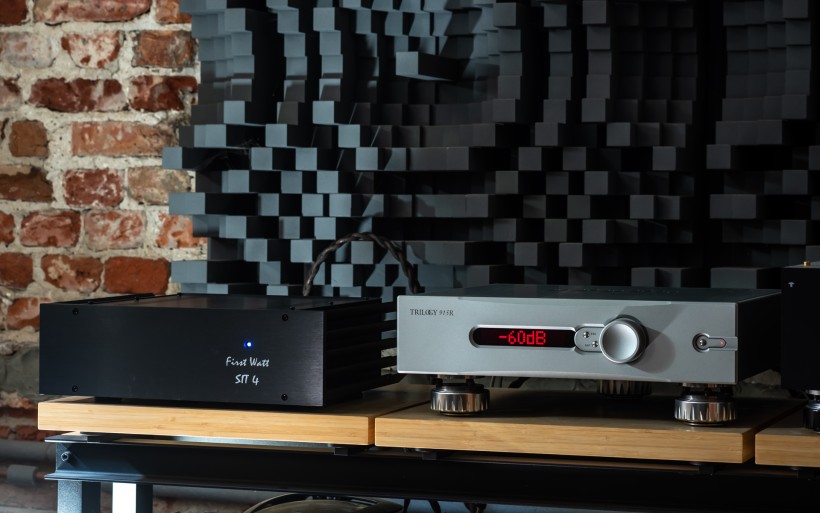 The F8 followed suit on the usual class A goodness, but also struck me as more athletic and muscular than its older sibling, which naturally felt chunkier, denser and relaxed in comparison. The former’s profile simply felt more mainstream and universal versus its stablemate’s mellower thicker character. A small dip in roundness financed the F8’s extra bite, snap and clarity, but it was a fair trade. There was one catch, however. Back then I remarked that a dense amp ought to feel lazier than a machine primed for audible fitness and articulation. That said, the milder F7 was expected to have its bass on the bloomier and softer side, while the sportier more authoritative F8 was supposed to have it tighter and more ripped. It was the other way around. Just to make it clear, in the downstairs department neither the F7 was lightning-quick nor the F8 slow and bloated, but the gap between them on that score clearly registered. Low output impedance means high damping so more woofer control. High output impedance does the opposite, so usually beefier more voluptuous calmer bass. The F8 had that parameter 2.5x higher than its sibling. Maybe Nelson did this deliberately, just to inject a touch of playfulness to the otherwise sporty F8, and like so add yet another layer to its already complex personality? Beats me, but it’s a lot of an amp for the coin.
The F8 followed suit on the usual class A goodness, but also struck me as more athletic and muscular than its older sibling, which naturally felt chunkier, denser and relaxed in comparison. The former’s profile simply felt more mainstream and universal versus its stablemate’s mellower thicker character. A small dip in roundness financed the F8’s extra bite, snap and clarity, but it was a fair trade. There was one catch, however. Back then I remarked that a dense amp ought to feel lazier than a machine primed for audible fitness and articulation. That said, the milder F7 was expected to have its bass on the bloomier and softer side, while the sportier more authoritative F8 was supposed to have it tighter and more ripped. It was the other way around. Just to make it clear, in the downstairs department neither the F7 was lightning-quick nor the F8 slow and bloated, but the gap between them on that score clearly registered. Low output impedance means high damping so more woofer control. High output impedance does the opposite, so usually beefier more voluptuous calmer bass. The F8 had that parameter 2.5x higher than its sibling. Maybe Nelson did this deliberately, just to inject a touch of playfulness to the otherwise sporty F8, and like so add yet another layer to its already complex personality? Beats me, but it’s a lot of an amp for the coin.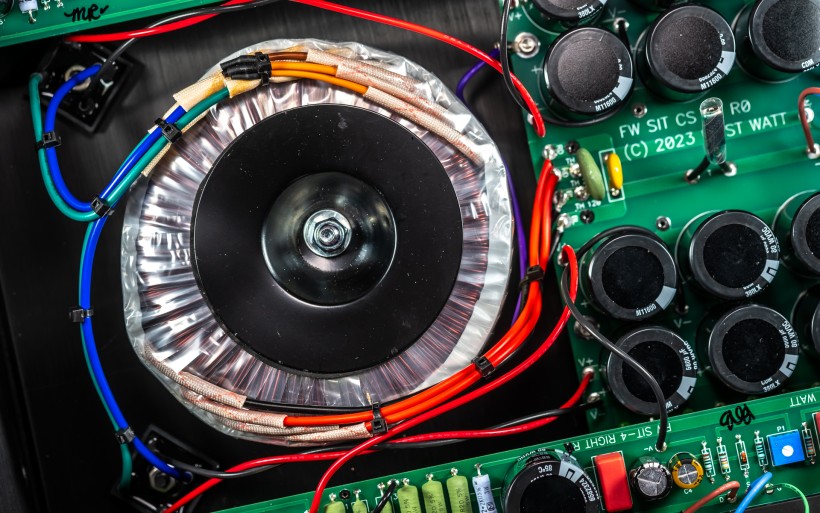 The brawl between the SIT4 and F7 had its own surprises in store. To level the battlefield, both amps connected to the Trilogy 915R pre and were powered via identical C-MARC cords from the same distributor. The F7 needed -20dB on the 915R to achieve 78dB SPL with the DWX. The SIT4 wanted 7dB less attenuation to do the same. Most importantly, it felt significantly more wholesome, anchored and alive with the ZU. It’s a naughty speaker set, this one. It provides all the usual wideband perks, so high competence on imaging precision, articulation, directness, immediacy, energy, quickness and outline specificity atop seductiveness and expression. It also rocks a very large paper cone on a stiff suspension, which moves lots of air very effortlessly. That proved extremely useful on rock and metal fare, the DWX did truly brilliantly here. The wideband aroma blended with rock star attitude resulted in a highly versatile speaker set, even though it doesn’t reach very low. The SIT4 didn’t change that either yet audibly contributed. I imagined that its lesser control on that load had to introduce some wobble. It was the other way around. Nelson’s latest not only reinforced the ZU’s bass presence as expected, but it also kept that range admirably punctual. The extra mass on the bottom and high-tiered control over it netted sound that was fuller, feistier and more intense. When the F7 fronted the DWX, a fair share of that sensation was gone.
The brawl between the SIT4 and F7 had its own surprises in store. To level the battlefield, both amps connected to the Trilogy 915R pre and were powered via identical C-MARC cords from the same distributor. The F7 needed -20dB on the 915R to achieve 78dB SPL with the DWX. The SIT4 wanted 7dB less attenuation to do the same. Most importantly, it felt significantly more wholesome, anchored and alive with the ZU. It’s a naughty speaker set, this one. It provides all the usual wideband perks, so high competence on imaging precision, articulation, directness, immediacy, energy, quickness and outline specificity atop seductiveness and expression. It also rocks a very large paper cone on a stiff suspension, which moves lots of air very effortlessly. That proved extremely useful on rock and metal fare, the DWX did truly brilliantly here. The wideband aroma blended with rock star attitude resulted in a highly versatile speaker set, even though it doesn’t reach very low. The SIT4 didn’t change that either yet audibly contributed. I imagined that its lesser control on that load had to introduce some wobble. It was the other way around. Nelson’s latest not only reinforced the ZU’s bass presence as expected, but it also kept that range admirably punctual. The extra mass on the bottom and high-tiered control over it netted sound that was fuller, feistier and more intense. When the F7 fronted the DWX, a fair share of that sensation was gone. The key differences between the SIT4 and F7’s profiles narrow down to just two sentences. The former felt more gathered, punchier and texturally juicier. The latter was more diffused, innocent, icier, leaner and color-wise opaque, even though in comparison to most other amps out there it’s anything but. That’s all there is to it really as far as that comparison goes. The SIT4 is quite special however. It’s spectacular on tone complexity, spatial hydration, fleshiness and vividness. It sounds off-charts organic, elastic and tangible. I know. Bold words, all said before. The reality is that in case of this particular amp I lack vocabulary to express what I really mean, and how I really feel about it. The main aspect that positions the SIT4 noticeably above all other amps I’d heard is immersion, so spatial virtue that makes music very much threedimensional, material, enveloping and here. My 995R monos largely do that, but the SIT4 is extremely gifted in this regard and a cut above any other hardware I know. The DWX already communicated that. The Vox even more so.
The key differences between the SIT4 and F7’s profiles narrow down to just two sentences. The former felt more gathered, punchier and texturally juicier. The latter was more diffused, innocent, icier, leaner and color-wise opaque, even though in comparison to most other amps out there it’s anything but. That’s all there is to it really as far as that comparison goes. The SIT4 is quite special however. It’s spectacular on tone complexity, spatial hydration, fleshiness and vividness. It sounds off-charts organic, elastic and tangible. I know. Bold words, all said before. The reality is that in case of this particular amp I lack vocabulary to express what I really mean, and how I really feel about it. The main aspect that positions the SIT4 noticeably above all other amps I’d heard is immersion, so spatial virtue that makes music very much threedimensional, material, enveloping and here. My 995R monos largely do that, but the SIT4 is extremely gifted in this regard and a cut above any other hardware I know. The DWX already communicated that. The Vox even more so.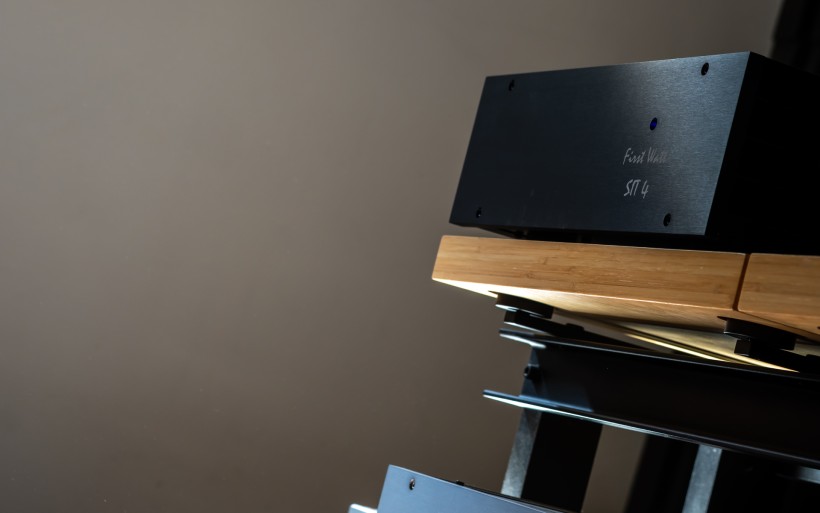 When I listened to the SIT4 with the ZU for the first time, it didn’t take long to notice that this was a spot on match. The Vox is an easy load yet tougher to drive than the DWX, so I carefully assumed that less impressive sonics were in the cards. Wrong. Just as it was previously the case, the SIT4 extended the Swiss speaker’s bass reach, control and filler. I’m not sure how much deeper the Vox dug with such assistance, if any at all. I had no means to measure that. Still, its downstairs felt more guttural, muscular, nimble and powerful yet perfectly clean and composed, so that everything above this frequency range remained as articulated, visible and as nuanced as ever. The SIT4 also brilliantly elevated the sound|kaos’ already high tonal provision. The outcome wasn’t excessively warm, chunky, slow or earthy, but texturally fully ripe, spot on hefty, brimming with easy details, vivacious, nimble, fresh and tactile. More importantly, the way how the SIT4 elevated the Vox’s outrageous imaging skills left me speechless. I had no idea that there was any room for improvements in this regard.
When I listened to the SIT4 with the ZU for the first time, it didn’t take long to notice that this was a spot on match. The Vox is an easy load yet tougher to drive than the DWX, so I carefully assumed that less impressive sonics were in the cards. Wrong. Just as it was previously the case, the SIT4 extended the Swiss speaker’s bass reach, control and filler. I’m not sure how much deeper the Vox dug with such assistance, if any at all. I had no means to measure that. Still, its downstairs felt more guttural, muscular, nimble and powerful yet perfectly clean and composed, so that everything above this frequency range remained as articulated, visible and as nuanced as ever. The SIT4 also brilliantly elevated the sound|kaos’ already high tonal provision. The outcome wasn’t excessively warm, chunky, slow or earthy, but texturally fully ripe, spot on hefty, brimming with easy details, vivacious, nimble, fresh and tactile. More importantly, the way how the SIT4 elevated the Vox’s outrageous imaging skills left me speechless. I had no idea that there was any room for improvements in this regard.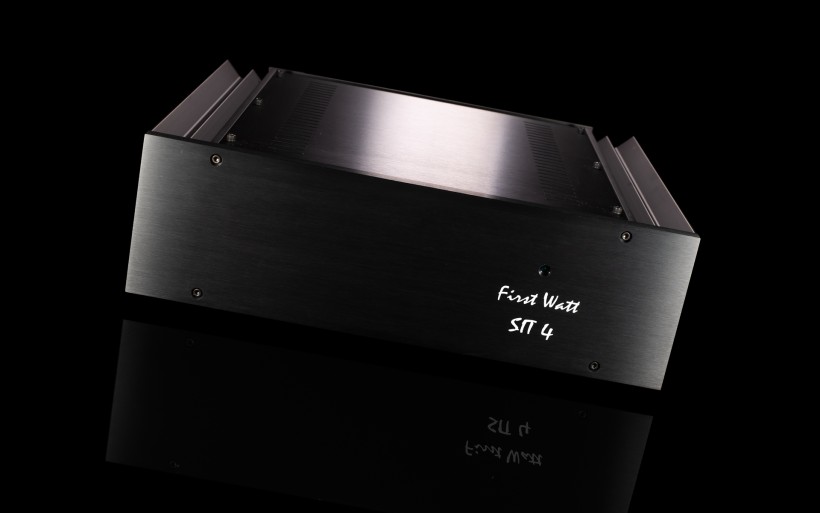 Spatial projections cast by regular speaker sets often grow to gargantuan size at my place yet remain uniformly stretched from left to right and modestly layered at best, which makes the view somewhat remote versus the Vox. When positioned in nearfield and toed in to radiate directly at our ears, this compact type shortens the distance to the key sound sources and bends the entire landscape, so that it becomes more enveloping. This boosts imaging depth and its complexity, and also makes music significantly more immersive and intense in the process. This is the reason why my guests used to regular two- or three-ways find the Vox experience quite mental. The Swiss’ point-source dispersion MO also makes it inherently revealing, precise and articulated, so traits desirable for imaging. However, this compact wonder doesn’t have enough cone surface to sound like a larger product. I’m perfectly fine with the fact that it struggles at high SPL. It’s not meant for that, or so I thought.
Spatial projections cast by regular speaker sets often grow to gargantuan size at my place yet remain uniformly stretched from left to right and modestly layered at best, which makes the view somewhat remote versus the Vox. When positioned in nearfield and toed in to radiate directly at our ears, this compact type shortens the distance to the key sound sources and bends the entire landscape, so that it becomes more enveloping. This boosts imaging depth and its complexity, and also makes music significantly more immersive and intense in the process. This is the reason why my guests used to regular two- or three-ways find the Vox experience quite mental. The Swiss’ point-source dispersion MO also makes it inherently revealing, precise and articulated, so traits desirable for imaging. However, this compact wonder doesn’t have enough cone surface to sound like a larger product. I’m perfectly fine with the fact that it struggles at high SPL. It’s not meant for that, or so I thought.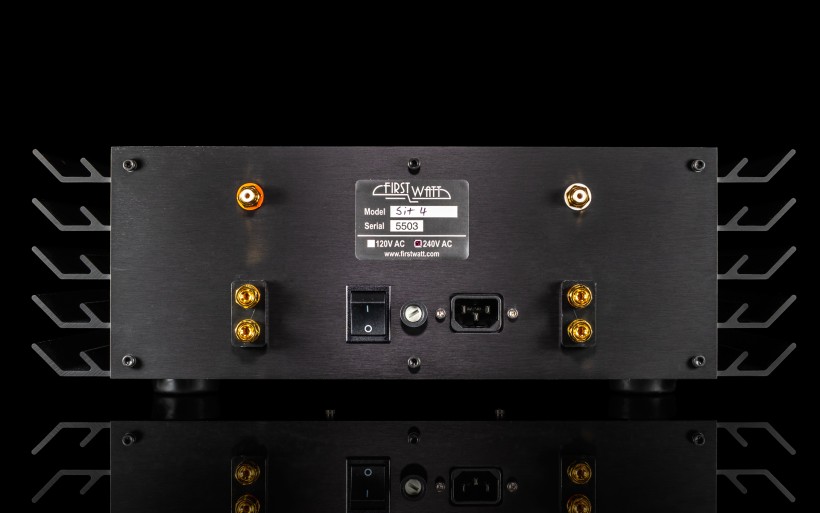 The SIT4’s contribution to my daily driver’s bass output resulted in its optically grander sensibly tauter profile that also embedded copious amounts of additional ease. I hadn’t seen that coming. For some reason, and I can’t quite wrap my head around this, the Vox felt more authoritative, controlled and complete with this 10wpc monster than with any other amp I’ve tried, and there were many. Heck, even my 55wpc monos produced calmer, bloomier and muddier lows with this load. I don’t have to know how the SIT4 tapped into the Swiss’ hidden reserves. What mattered more was the result, which to my ears was the potent base for the additional gains in immersion. The Vox already is wicked in this department and so is the FirstWatt. Their combination effectively squared the mental factor and got me to the place where I haven’t yet been with these speakers. I haven’t yet heard them this accurate, grounded, intense on color, seductive, hydrated, spatially majestic, enveloping and alive at the same time, all in all gorgeous. Some would call this magic. I call it the most wholesome Vox sound to date. Should you crave those long-forgotten teary-eyed moments when listening to music, this is how it’s done.
The SIT4’s contribution to my daily driver’s bass output resulted in its optically grander sensibly tauter profile that also embedded copious amounts of additional ease. I hadn’t seen that coming. For some reason, and I can’t quite wrap my head around this, the Vox felt more authoritative, controlled and complete with this 10wpc monster than with any other amp I’ve tried, and there were many. Heck, even my 55wpc monos produced calmer, bloomier and muddier lows with this load. I don’t have to know how the SIT4 tapped into the Swiss’ hidden reserves. What mattered more was the result, which to my ears was the potent base for the additional gains in immersion. The Vox already is wicked in this department and so is the FirstWatt. Their combination effectively squared the mental factor and got me to the place where I haven’t yet been with these speakers. I haven’t yet heard them this accurate, grounded, intense on color, seductive, hydrated, spatially majestic, enveloping and alive at the same time, all in all gorgeous. Some would call this magic. I call it the most wholesome Vox sound to date. Should you crave those long-forgotten teary-eyed moments when listening to music, this is how it’s done.
FirstWatt amps aren’t for everyone. It takes a particular listener intelligence and awareness to appreciate their kind. Enthusiasts with fitting loads and brand familiarity already know the drill and address. The SIT4’s casual exterior, price to sell, technological pedigree and sublime performance are hardly any news to this audience. Meanwhile, my role is to spread the word about this superbly voiced marvel here. Many amps are special in one way or another. Nelson Pass’ latest creation went significantly beyond just that in my book. I don’t know how closely it mimics regular DHT designs and I couldn’t care less. At the end of the day this is by far the most accomplished and exquisite low-power amp I have ever listened to. In my room it proved excellent on every sonic front I can think of. If you have just the right speakers for it, this is the one not to consider, but to get. It deserves the red.
Associated Equipment:
- Amplifier: Trilogy 995R, FirstWatt F7, Enleum AMP-23R
- DAC: LampizatOr Pacific (KR Audio T-100 / Living Voice 300B + KR Audio 5U4G Ltd. Ed.)
- Speakers: Boenicke Audio W11 SE+, sound|kaos Vox 3afw
- Transport: Innuos Statement, fidata HFAS1-S10U
- Preamplifier: Trilogy 915R, Thöress DFP
- Speaker cables: Boenicke Audio S3, LessLoss C-MARC
- Headphones: HifiMan Susvara
- Speaker signal conditioning: LessLoss Firewall for Loudspeakers, Boenicke ComDev
- Anti-vibration conditioning: 6x Carbide Base Diamond (under speakers), 6x Carbide Base Micro Diamond with TwinDamp inserts and spikes (under DAC and pre)
- Interconnects: LessLoss Entropic Process C-MARC, Boenicke Audio IC3 CG
- Power components: Gigawatt PC-3 SE EVO+/LC-3 EVO, LessLoss C-MARC, LessLoss Entropic Process C-MARC, Boenicke Audio Power Gate, ISOL-8 Prometheus
- USB components: iFi audio Mercury3.0
- Rack: Franc Audio Accesories Wood Block Rack 1+3
- Network: Fidelizer EtherStream, Linksys WRT160N
- Music: NativeDSD
Retail prices of reviewed components in EU (excl. VAT):
- FirstWatt SIT4: $5’000
Manufacturer: FirstWatt


